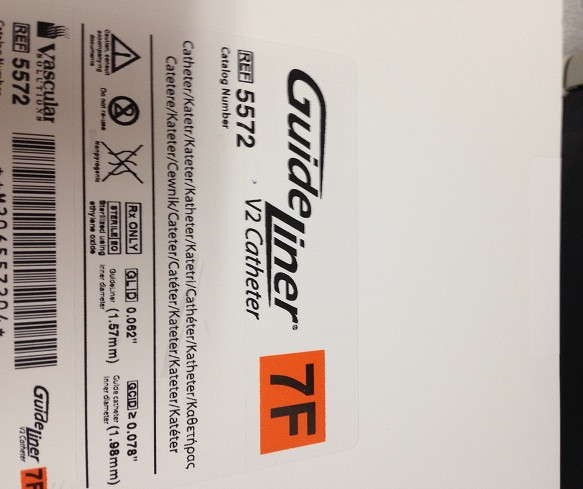

Furthermore, most operators in our catheter laboratory preferred to try the Guideplus rather than the GuideLiner after the launch of the Guideplus, which could be a selection bias. Especially, since the Guideplus was launched after the GuideLiner, we started to use the Guideplus at later study period (from February 2017). Because this study was a single-center retrospective observational study, there is a risk of selection bias. The present study has the following limitations. Particularly, one-fifth of Guideplus cases were used to support the small profile balloon crossing the CTO or 99% stenosis that the microcatheter could not cross, whereas there were no GuideLiner cases that were used for that purpose. The purpose of guide extension catheter was significantly different between the Guideplus and GuideLiner groups. The present study included 195 lesions, which were divided into 92 lesions using the Guideplus and 103 lesions using the GuideLiner. PCI to the right coronary artery was less frequently performed in the Guideplus group (57.6%) than in the GuideLiner group (72.8%). Table 2 shows the comparison of lesion and procedural characteristics between the 2 groups. The prevalence of PCI to the culprit of STEMI was less in the Guideplus group (9.8%) than in the GuideLiner group (25.2%). Most of clinical characteristics were comparable between the 2 groups. Table 1 shows the comparison of patient characteristics between the 2 groups. (2) To engage guide catheter into the ostium of coronary Result During the study period, interventional cardiologists in our medical center used GuideLiner or Guideplus by the following 3 reasons: (1) To advance devices including stent, balloon, or intravascular ultrasound (IVUS) catheter into the target lesion (Fig. The aim of the present study was to compare device performance between the Guideplus and GuideLiner in clinical setting.įrom our catheter laboratory records, we identified lesions that underwent PCI using GuideLiner or Guideplus from May 2014 to December 2017. However, the direct comparison of device performance has not been investigated between the GuideLiner and Guideplus. Thus, the Guideplus may have better performance as “child” as compared to the GuideLiner. The Guideplus does not require anchor ballooning in most cases, because of its softness and hydrophilic coating. Recently, the Guideplus (Nipro, Osaka, Japan), which is a soft guide extension catheter, was launched. For example, anchor ballooning is essential to advance the GuideLiner in most cases. As the emergence of guide extension catheter such as GuideLiner (Vascular Solutions Inc., Minneapolis, MN) has made mother in child technique simpler, the GuideLiner is more frequently used as “child” than the straight tip catheter in current complex PCI, ,, ].Īlthough the GuideLiner has dramatically simplified the mother in child technique, the GuideLiner has some limitations. The mother in child technique using 5 Fr straight tip catheter was useful for complex lesions, but the insertion of straight tip catheter into guide catheter was not simple. Operators should be aware of the potential complications associated with GuideLiner use.Current percutaneous coronary intervention (PCI) is applicable to more complex lesions such as tortuous, diffuse, calcified or totally occluded lesions, partly because of the development of devices such as drug-eluting stents or small profile balloons, and techniques such as “mother in child” technique, , ]. Use of the GuideLiner catheter facilitated successful completion of PCI procedures in a majority of patients with complex lesions. The overall technical success rate of the GuideLiner was 88%. The majority of lesions were types B2 or C (98%), calcified (86.3%), with proximal tortuosity (88.6%). The mean age was 68.4 ± 11.2 years and 82% were male. The GuideLiner was utilized in 307 (317 lesions) of 6105 PCI procedures performed at our institution during the study period. Indications for use of the GuideLiner, and angiographic and procedural data specific to the device were also collected. Demographic and procedural data were obtained from an institutional prospective data registry. We collected data from all patients in whom the GuideLiner was used to facilitate PCI between Apand Decemat a tertiary referral center in Toronto, Canada. Therefore, we aim to report the indications, success, and efficacy of GuideLiner use in treating complex lesion subset in the present study. There is paucity of data about the efficacy of this device in complex PCI. Minneapolis, MN) is a rapid exchange guide catheter extension system.

The GuideLiner® catheter (Vascular Solutions, Inc. Percutaneous coronary intervention (PCI) procedures are increasingly performed on complex tortuous and heavily calcified coronary lesions.


 0 kommentar(er)
0 kommentar(er)
